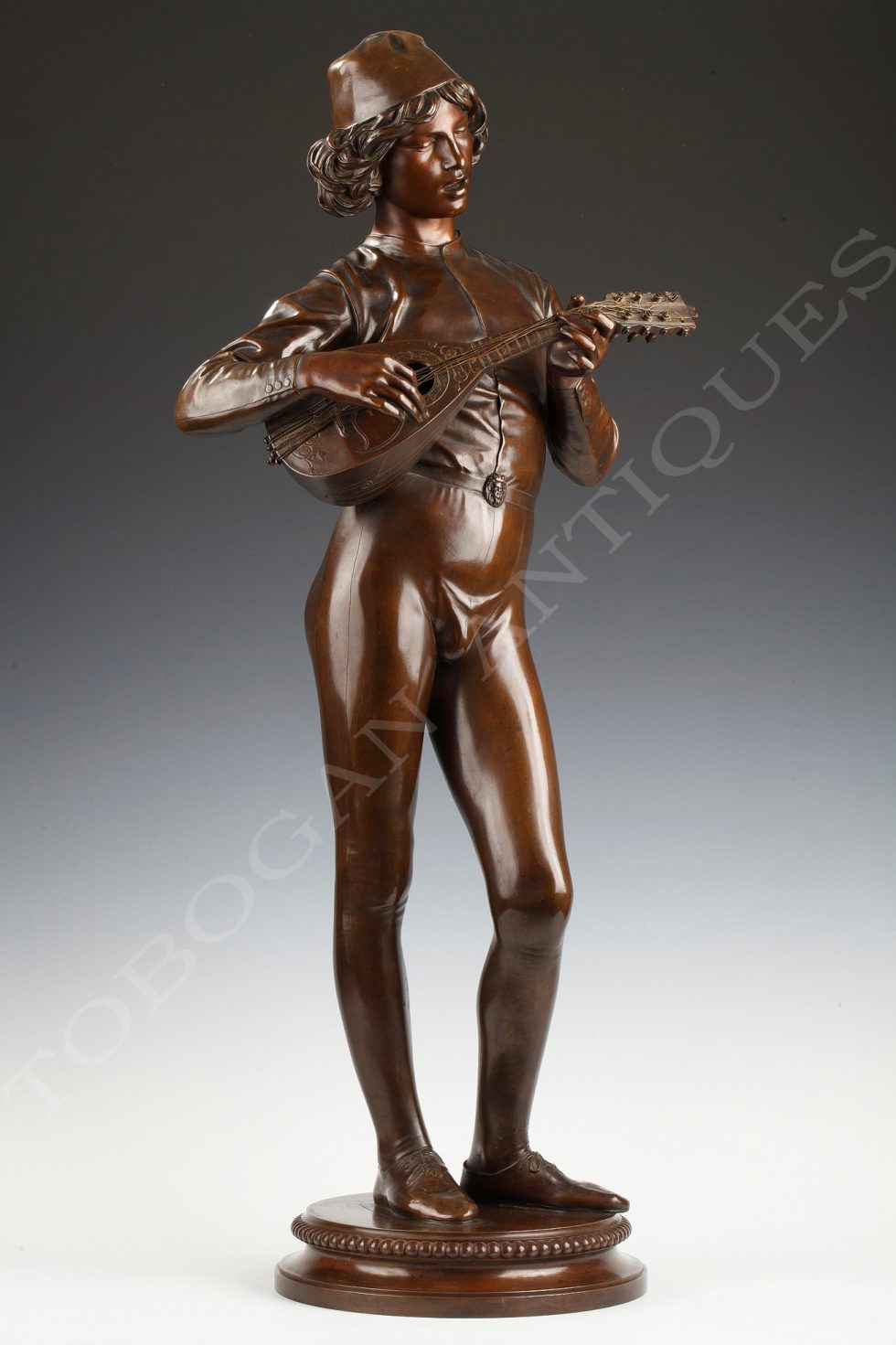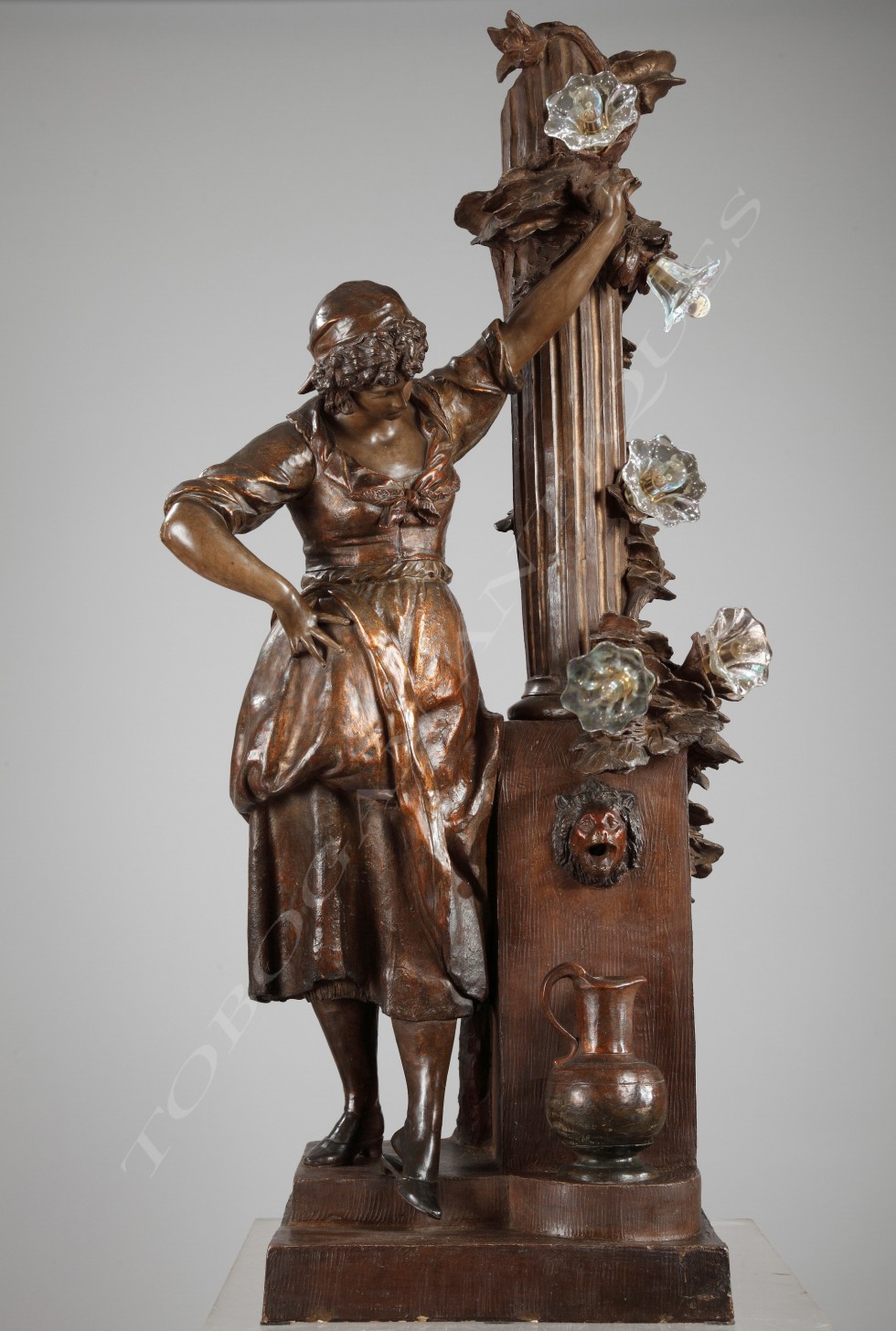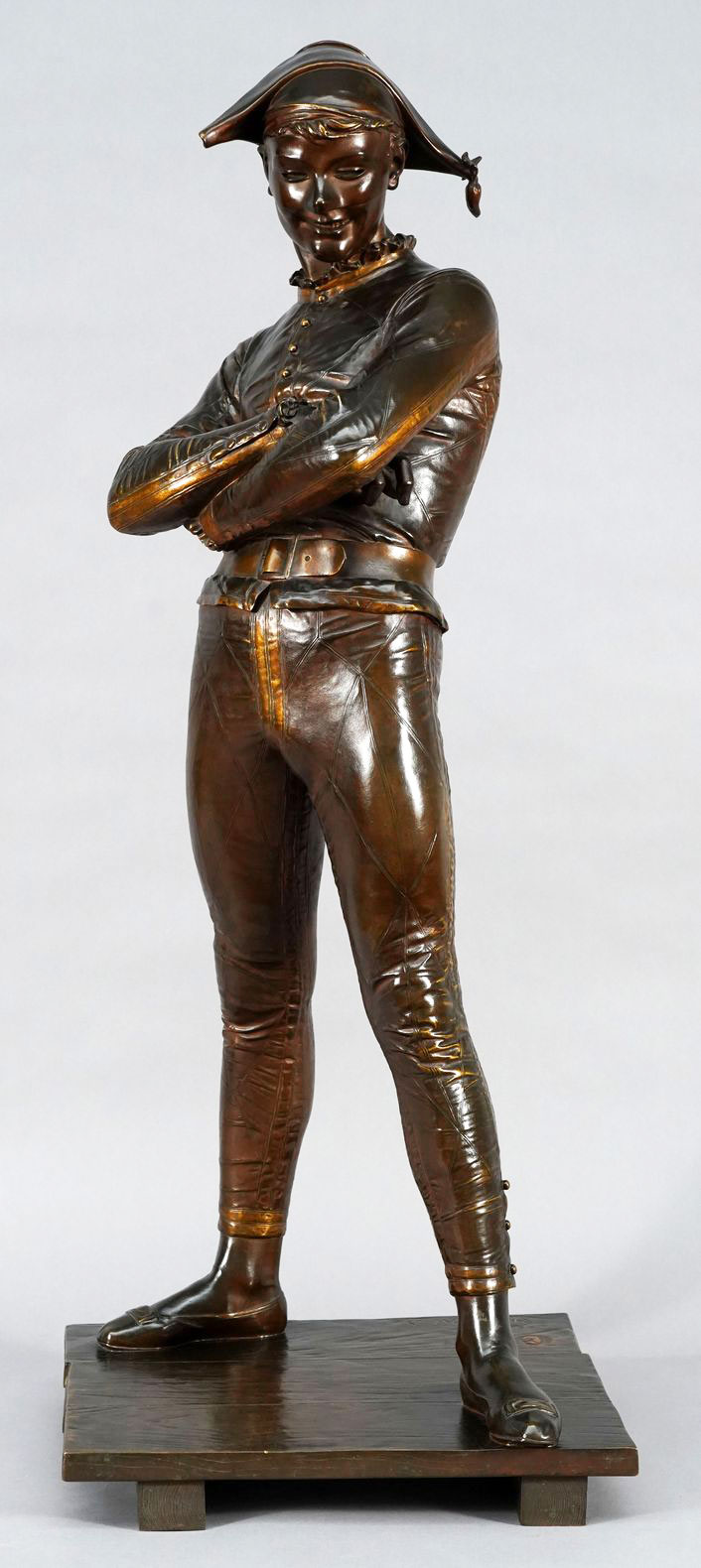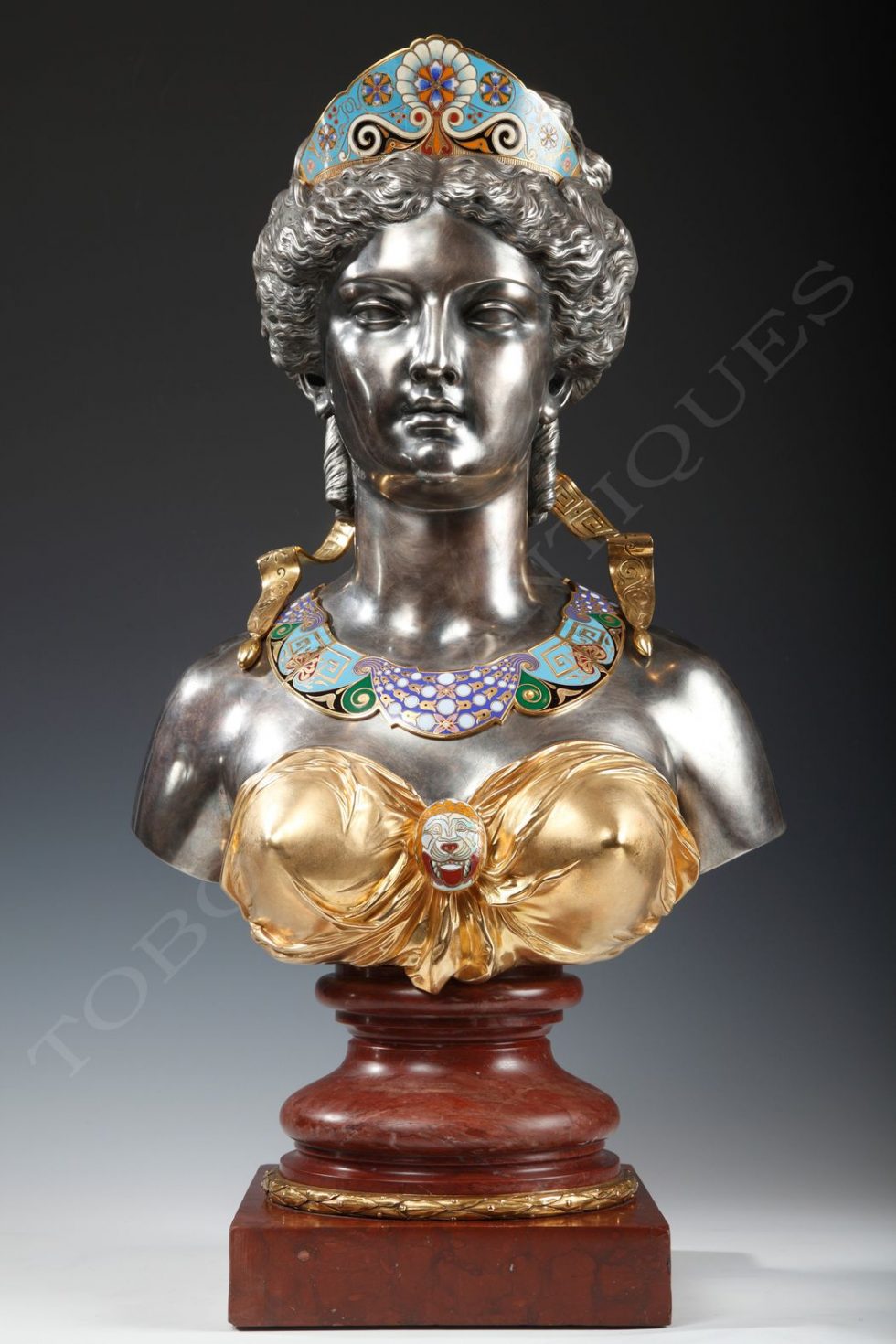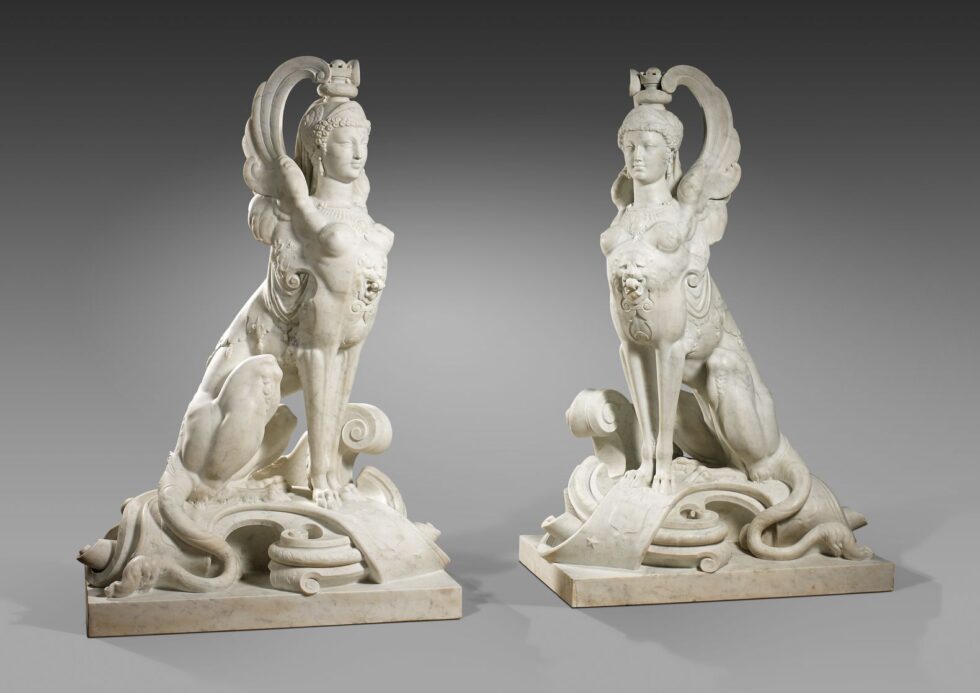Ref. 1404
E. Guillemin
Sculptor
(1841-1907)
French School
Bust of a young woman from north Africa
Signed E’le. Guillemin
France
Circa 1875
Overall height : 62 cm (24,4 in) ; Width : 41 cm (16,1 in) ; Depth : 24 cm (9,5 in)
Very fine bust of a woman from North Africa, made of patinated and polychrome bronze with orange-red tones. Her hair is tied, she wears head ornaments, a traditional costume and oriental jewellery, including a necklace featuring medallions inscribed with Arabic characters and crescents. Antique red marble base.
Orientalism
The taste for exoticism and ‘turqueries’ already existed in Europe in the 17th century. At the turn of the 19th century, the Campaign in Egypt led by Bonaparte inspired the French artists with a taste for the Orient, its beauty and light, and responded as well to the quest for foreign and the fascination for mystery. Nevertheless, Orientalism did not become an artistic movement named as such before 1830 when the catch of Algiers took place.
Benefiting from the development of means of transport, artists travelled to areas which were still little known at the time such as Maghreb countries and Persia. Artists such as Decamps, Fromentin, Delacroix or Gérôme developed new themes, sometimes in the romanticism manner, sometimes with a documentary and naturalist approach : despotism of the tyran, sensuality of the harem, picturesque street scenes, richness of the landscapes.
By the end of the Second Empire, Academicism turned towards modernity and obscured the Orientalist taste during a few years. However, the Orientalist Movement knew a resurgence with the creation of the Society of Orientalist Painters and the Universal Exhibitions of 1855 and 1867.
E. Guillemin was a part of this second generation of orientalist painters. He was passionate about the exotic genre, and offered a range of dimensions for his works including some colossal sculptures. He created biblical heroes, conquistadors, and above all: very lively Oriental figures. Like Charles Cordier (1827-1905), he brought together colors and materials in an innovative way: polychromy of marbles and bronzes, associations of enamels and stones with silver or copper… This greatly favored collaborations between sculptors and art casters, such as the one between Guillemin and Barbedienne for the Indian and Oriental women-like torchères.
Biography
A leading Parisian sculptor of the period, Emile Guillemin (1841-1907) trained with his father Emile-Marie-Auguste Guillemin, then with the sculptor Jean-Jules Salmson. He began his career at the 1870 Salon of French Artists, with two plasters presenting two Roman gladiators, that will be made in bronze and later acquired by the State for Saint-Germain-en-Laye Castle. His growing reputation allowed him collaborating with prestigious luxury firms such as Barbedienne and Christofle. He continued exhibiting at the Salon until the end of the years 1890. He notably presented a series of bronze busts of oriental women similar to the one we offer for sale. Around the time he created these busts, E.Guillemin travelled in North Africa and around the Mediterranean Basin, aiming to list the anthropological characters of the different local cultures. The excellence of E.Guillemin shines through these sculptures, enhanced by a remarkable chiseling quality and the realism of the subjects.
Museology
– Museum of Fine Arts, Montréal (Canada) : sculpted group depicting Eliézer and Rébecca.
– Orsay Museum, Paris : Bas d’armoire by Diehl, mounted with gilt bronze panels by Guillemin (Inv. O.A.O. 992), Exposition Universelle de Paris, 1867.
– Saint-Germain-en-Laye Castle : Two Roman Gladiators: Rétiaire and Mirmillon (bronzes after the plaster models exhibited at the Salon in 1870).
Bibliography
Orsay Museum Archives.
L’univers des bronzes, Yves Devaux, Ed. Pygmalion, Paris, 1978.
Les bronzes du XIXe siècle, P. Kjellberg, Les Ed. de l’amateur, 1989, p. 369-370.
Contact us
Tobogan Newsletter
If you want to be up-to-date with our new acquirings you can sign up to our newsletter.


